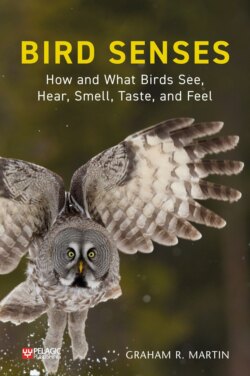Читать книгу Bird Senses - Graham R. Martin - Страница 29
На сайте Литреса книга снята с продажи.
Animal psychophysics
ОглавлениеThe branch of science that investigates questions about the relationship between stimulus conditions and how they are perceived became known as ‘psychophysics’. The term was coined 160 years ago by Gustav Fechner, who is credited as being the first experimental psychologist. The techniques developed in his early studies in psychophysics put in place a set of procedures for characterising sensory performance that persist to the present day. However, it was not until the development of ideas about ‘conditional’ responses by Ivan Pavlov in Russia, and later by B. F. Skinner in America, that researchers found ways of establishing ‘animal psychophysics’. Using these techniques, it became possible to combine carefully controlled stimulus conditions with consistent and reliable behavioural responses to ask an animal about what it can see, hear, taste, smell, etc.
The pioneering work in animal psychophysics used the techniques of operant conditioning developed by Skinner to train animals to make specific responses when a particular stimulus or set of stimuli is presented. Remarkably, it was found that animals could be trained to respond to a very wide range of arbitrary stimuli that really had no place in the natural world in which the animals had evolved. Once the animal has learned to respond in this way to a novel stimulus it is then possible to systematically make changes to a stimulus and establish the limits of performance. Hence it becomes possible to answer such questions as how sensitive an owl’s vision is, or how sensitive a pigeon is to the smell of particular compounds, and to be confident that answers are reliable and comparable between individuals and across species.
Properly controlled animal psychophysics studies involving trained animals are the benchmark for understanding animals’ senses. However, not all animals can be trained easily using operant conditioning and a great deal has been learned from less systematic, often field-based, studies. Such studies often give only an indication of what a bird might be able to detect, and they often lack accurate quantification. For example, a lot has been learned in recent years about the use of the senses of smell and taste by birds. Knowledge is now being gained about which smells are more salient or important to different species, but it has not yet been possible to determine just how sensitive birds are to particular compounds.
